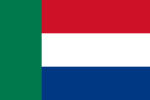Chartwell, Gauteng
Johannesburg Region AJohannesburg stubs
Chartwell Agricultural Holdings is a rural settlement in Gauteng, South Africa. It is located in the former Region 1 and Region 5. Chartwell is mainly an agricultural suburb made up of small holdings. Chartwell AH is bisected by Cedar Avenue, which runs on the line of Sixth Road, Chartwell. This effectively divides Chartwell into North and South sections, known as Chartwell North Estates (CNE) and Chartwell Country Estates (CCE), respectively. Farmall, a suburb of Chartwell AH, is also known as Chartwell West.North Champagne Estates lies to the West of CNE, and Steyn City to the East. Farmall lies to the West of CCE, with Broadacres to the East and South
Excerpt from the Wikipedia article Chartwell, Gauteng (License: CC BY-SA 3.0, Authors).Chartwell, Gauteng
5th Street,
Geographical coordinates (GPS) Address Nearby Places Show on map
Geographical coordinates (GPS)
| Latitude | Longitude |
|---|---|
| N -25.9826 ° | E 27.9693 ° |
Address
5th Street
5th Street
2055 , Broadacres AH
Gauteng, South Africa
Open on Google Maps

